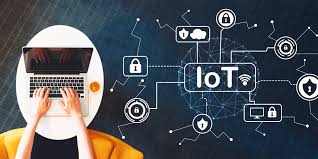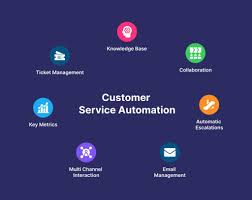
1. Introduction to Enhancing Customer Experience
Customer experience, often referred to as CX, represents how customers perceive their interactions with a business. From the first click on a website to post-purchase services, CX covers every touchpoint.
In today’s competitive market, delivering a superior customer experience is no longer optional. Customers expect fast responses, tailored interactions, and seamless journeys. Businesses that fail to meet these expectations risk losing their audience to competitors.
Technology has emerged as a game-changer in the CX landscape. With advancements in AI, AR/VR, and IoT, companies can offer more personalized and engaging experiences. In this article, we’ll explore various technologies revolutionizing CX, their applications, and how businesses can leverage them effectively.
2. Artificial Intelligence (AI) in Customer Experience

AI has become a cornerstone in modern customer experience strategies. Here’s how it’s transforming the field:
How AI Personalizes Customer Interactions
- AI algorithms analyze customer preferences and behaviors.
- Personalized recommendations (e.g., Netflix or Amazon suggestions).
- Dynamic email marketing campaigns tailored to individual interests.
AI Chatbots and Their Role in CX
AI-powered chatbots handle customer queries 24/7.
- They reduce wait times and improve satisfaction.
- Examples include:
- eCommerce chatbots: Suggest products based on browsing history.
- Healthcare bots: Schedule appointments or provide medical advice.
Predictive Analytics for Understanding Customer Behavior
AI tools analyze past behaviors to forecast needs:
- Retailers can predict stock demands.
- Hospitality businesses can anticipate peak booking seasons.
Real-Life Examples of AI Improving CX
- Sephora’s Virtual Artist: Offers personalized makeup recommendations using AI.
- Spotify: Creates tailored playlists by analyzing user preferences.
3. Augmented Reality (AR) and Virtual Reality (VR)
Imagine buying furniture without stepping into a store or trying on clothes virtually. AR and VR make this possible.
How AR/VR Enhances Product Visualization
- Customers can see how a product fits into their space or style.
- Example: IKEA’s AR app allows users to visualize furniture in their homes.
Use Cases in Retail and Real Estate
- Retail: Virtual fitting rooms enhance shopping experiences.
- Real Estate: Virtual tours of properties save time for buyers and agents.
AR/VR for Immersive Customer Experiences
Brands can create immersive stories to engage customers. For instance:
- Automobile brands: Allow customers to “test drive” cars virtually.
- Travel companies: Provide 360-degree views of destinations.
Challenges in Adopting AR/VR Technologies
- High initial investment costs.
- Limited customer familiarity with AR/VR tools.
4. Internet of Things (IoT) and Smart Devices

IoT connects everyday devices to the internet, transforming how businesses interact with customers.
How IoT Connects Businesses and Customers
- IoT devices collect real-time data.
- Businesses can monitor customer usage patterns and improve services.
Smart Devices in Customer Service
- Smart thermostats like Nest learn user preferences.
- Wearable devices track fitness and send recommendations.
Examples of IoT-Enabled CX Solutions
- Connected cars: Provide maintenance alerts to owners.
- Smart home assistants: Enhance convenience with voice commands.
Privacy Concerns and IoT
- Data security is a major issue.
- Transparent policies build customer trust.
5. Omnichannel Platforms and Communication Tools
Customers interact with businesses via multiple channels. Ensuring consistency across these channels is critical.
The Importance of Seamless Communication
- Disjointed communication frustrates customers.
- Unified platforms ensure consistent messaging.
How Omnichannel Platforms Unify Customer Data
- They integrate data from websites, apps, and stores.
- Customers receive tailored experiences regardless of the channel.
Role of Social Media in CX
Social media platforms like Instagram and Twitter are pivotal:
- They allow instant customer feedback.
- Brands can resolve issues publicly to build credibility.
Examples of Companies Excelling with Omnichannel Strategies
- Starbucks: Syncs its app with in-store experiences.
- Disney: Offers seamless booking and park navigation via its app.
6. Data Analytics and Insights

Data is the backbone of understanding and improving customer experiences. Companies today rely on advanced analytics to draw actionable insights and make informed decisions.
Role of Big Data in CX
Big data helps businesses collect, process, and analyze massive amounts of information:
- Identifying customer preferences and pain points.
- Spotting trends to predict future behavior.
- Optimizing marketing campaigns based on data-driven strategies.
For example:
- Retail giants like Walmart analyze shopping patterns to manage inventory.
- Streaming platforms like Netflix use viewing data to recommend content.
Tools for Gathering and Analyzing Customer Feedback
Customer feedback is invaluable for improvement. Tools like:
- Surveys: Platforms like Google Forms or Typeform collect direct customer input.
- Sentiment analysis tools: Analyze reviews or social media comments to gauge emotions.
Leveraging Insights to Predict Trends
By monitoring data, businesses can stay ahead of the curve:
- Fashion industry: Predicting seasonal trends.
- Tech companies: Anticipating customer needs for future devices.
Success Stories of Data-Driven CX
- Amazon: Uses purchase history to recommend products.
- Delta Airlines: Tracks frequent flyers’ preferences for personalized services.
7. Automation and Customer Self-Service

Automation is reshaping how customers interact with businesses. From speeding up processes to empowering users, automation has multiple benefits.
Benefits of Self-Service Portals
- Customers can resolve issues at their convenience.
- Reduces the dependency on human agents, saving costs.
- Examples include:
- FAQs and knowledge bases on company websites.
- Banking apps that allow instant fund transfers or card locking.
Automation Tools for Reducing Response Times
Tools like Zendesk and Freshdesk streamline customer service:
- Automating ticket prioritization.
- Triggering instant responses for common queries.
Examples of Successful Automation in CX
- Domino’s Pizza: Automated ordering through voice assistants.
- Uber: Sends automated updates about ride details.
Balancing Automation with Human Interaction
- While automation improves efficiency, some situations require empathy.
- Striking the right balance is essential to avoid customer frustration.
8. Conclusion: Future of Customer Experience
The integration of technology into customer experience isn’t slowing down—it’s accelerating. Businesses that embrace these advancements stand to gain loyal customers and a competitive edge.
Key takeaways:
- AI and data analytics provide the foundation for personalization.
- AR, VR, and IoT enhance engagement and convenience.
- Automation and self-service tools streamline processes without sacrificing quality.
As technology evolves, the focus should remain on the customer. By adopting the right tools and strategies, businesses can build experiences that resonate and create lasting relationships.
9. FAQs
1. What is customer experience technology?
Customer experience technology refers to tools and systems that improve how businesses interact with and serve their customers, such as AI, IoT, and data analytics.
2. How does AI improve customer experience?
AI personalizes interactions, predicts customer needs, and offers instant solutions through chatbots, predictive analytics, and tailored recommendations.
3. Why is omnichannel communication important?
It ensures a seamless and consistent experience across platforms, reducing customer frustration and improving satisfaction.
4. What are the benefits of using AR/VR in CX?
AR/VR enhances product visualization, offers immersive experiences, and helps customers make informed decisions.
5. How can small businesses afford these technologies?
Small businesses can start with scalable solutions like AI chatbots, basic analytics tools, or low-cost omnichannel platforms. Many tools offer budget-friendly options or tiered pricing.
